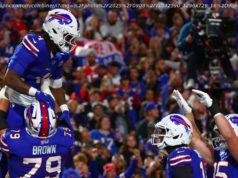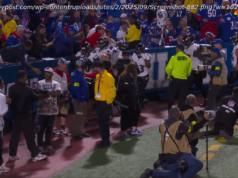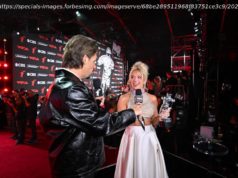Hugh Hefner is known most as an instigator of the sexual revolution of the 1960s and ’70s, but Playboy’s influence extended well beyond its centerfolds.
When Jann Wenner was preparing to launch Rolling Stone in 1967, he had some ideas about how to make the magazine’s interviews stand out.
«The Rolling Stone interview was modeled in part on the Playboy interview,» Wenner told The Associated Press this week, discussing the impact of the publication started by Hugh Hefner, who died Wednesday at age 91.
Wenner, whose magazine’s many notable interviews include conversations with John Lennon, Keith Richards and Elton John, explained that he wanted to combine The Paris Review’s respect for the artist’s craft with Playboy’s range and outlook.
«(Playboy) was the most exciting magazine in America for years and years and years,» he said.
Hefner is known most as an instigator of the sexual revolution of the 1960s and ’70s, but Playboy’s influence extended well beyond its centerfolds, whether by publishing such authors as Gabriel Garcia Marquez and Kurt Vonnegut, sponsoring comedians and jazz musicians or through its mastery of the art of the interview. Playboy’s long and searching conservations are remarkable for the people who spoke to the magazine and for what they said.
Playboy has met with political leaders (Fidel Castro), activists (Martin Luther King Jr., Malcolm X) and athletes (Muhammad Ali, Pete Rose). It was the rare publication to speak with Marlon Brando over the second half of his life. A joint interview with Lennon and Yoko Ono came out Dec. 6,1980, two days before the former Beatle was murdered by a deranged fan. Labor leader Jimmy Hoffa’s last interview before he disappeared, in 1975, was with Playboy. The interviewer was Mike Wallace, who as a television newsman had tried and failed to get Hoffa to talk.
«Why would Hoffa sit for a Playboy interview?» Wallace wrote in 1992 for a foreword to a book of Playboy interviews. «After all, he had previously declined a television interview with me. In retrospect, I think the answer is that he wanted more time — more words, more space — for himself, his ideas, his hates, his enthusiasms.»
Playboy’s most quoted interview likely was a 1976 meeting with then-presidential candidate Jimmy Carter. He was speaking to political journalist Robert Scheer, who asked whether people should worry that his Baptist faith would make him a «rigid, unbending president.» Carter responded with a long examination of his beliefs, including a passage that immediately, and permanently, became part of his legacy.
«I’ve looked on a lot of women with lust,» Carter confided. «I’ve committed adultery in my heart many times.»
Scheer wrote in a recent email that Playboy interviews «were a protected zone within this racy publication» and praised Hefner for supporting «serious journalism.» Carter’s «lust» comments made headlines, but Scheer thought the real news was Carter’s criticism of the late Lyndon Johnson, whom the candidate accused of «lying, cheating and distorting the truth.»
Hefner has said that he started the Playboy interview in the early 1960s after he saw excerpts from a conversation between «Roots» author Alex Haley, a freelance journalist at the time, and Miles Davis. Hefner was impressed that Davis didn’t just discuss music, but social issues, and he asked Haley to spend more time with the jazz trumpeter. Besides Wallace and Haley, who also collaborated on «The Autobiography of Malcolm X,» Playboy interviewers have included music critic/civil libertarian Nat Hentoff, Alvin Toffler of «Future Shock» fame and prize-winning journalist Tom Wicker.
David Sheff, who interviewed Lennon and Yoko Ono, has had a long career with the magazine. Over the past 35 years, he has spoken with everyone from Steve Jobs to Betty Friedan to Ansel Adams, and calls his work the «the kind of job people would pay to do, which isn’t to say it’s not difficult.»
Preparation means «massive amounts» of research and expectations are the highest: get the «definitive» interview. For Lennon and Ono, his first Playboy assignment, he spent three weeks with the couple, speaking with them over coffee, in the recording studio, in Central Park and at their home in Manhattan’s Dakota building.
«Our access allowed us to be with subjects when they weren’t ‘on’ — that is, whereas it was possible for them to present a rehearsed picture over the course of an hour or two, it was pretty hard if not impossible for them to sustain the facade over the course of many days and nights,» Sheff wrote in an email. «We were tough on subjects, but gave them the space to respond at length rather than in soundbites. Many said they wanted to do the Playboy interview because they were tired of being mischaracterized by news outlets that relied on out-of-context quotations.
«When we released the full Lennon-Ono interview in book form (‘All We Are Saying’), we included a quote from Lennon about the interview — ‘It will be the reference book.'»
Sign up today for unlimited digital access to our website, apps, the digital newspaper and more.






